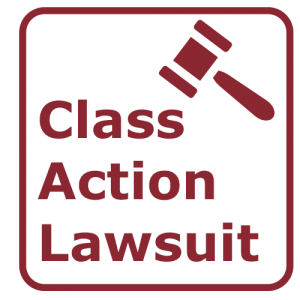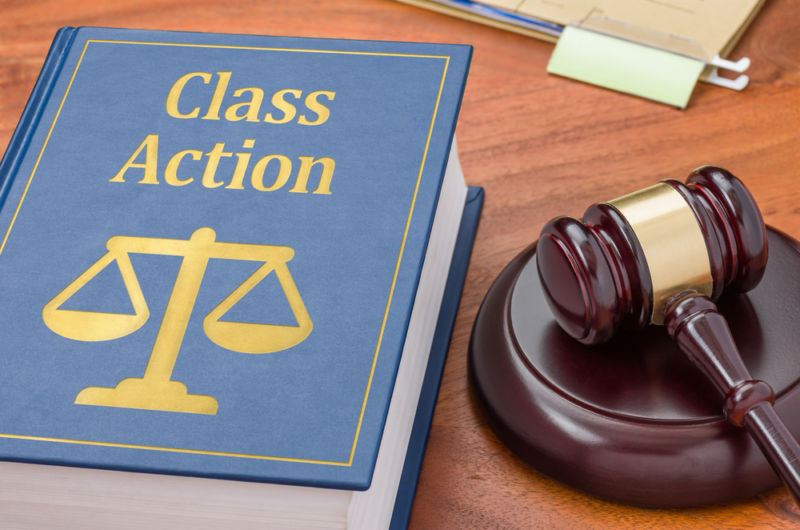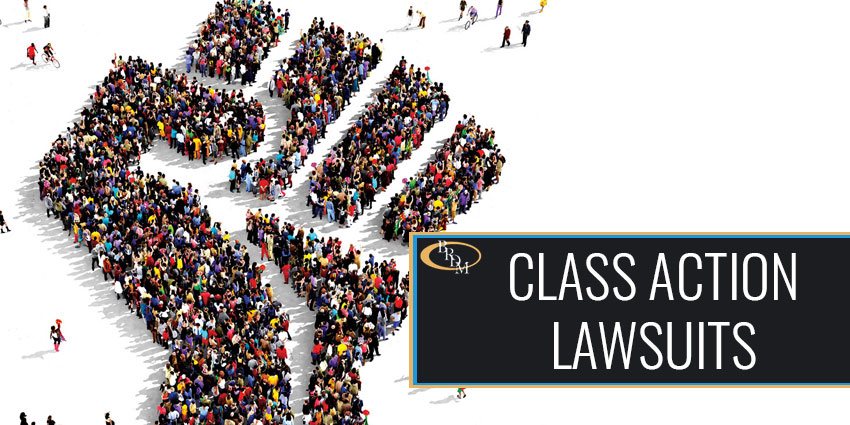Your Rights, Your Voice: The Basics of Pursuing a Class Action Lawsuit
Wiki Article
Understanding Course Activity Lawsuit: An Overview for Lawyers
Class action claims have become an indispensable part of the lawful landscape, enabling the loan consolidation of several insurance claims into a single activity. For attorneys, recognizing the ins and outs of course activity litigation is essential in efficiently representing their clients. This detailed guide checks out the principles of class action legal actions, from determining potential course participants to navigating the certification process. Furthermore, it dives right into vital methods for handling course activity lawsuits and supplies understandings right into acquiring and negotiating approval for negotiations. By diving into the ins and outs of course activity legal actions, this overview equips lawyers with the expertise and tools required to efficiently browse this complex location of law.The Fundamentals of Class Action Claims
Course action claims are a lawful device employed to consolidate comparable insurance claims from a group of individuals right into a single lawsuit, offering a cost-efficient and effective method to looking for justice and resolution. This sort of claim enables a representative complainant, acting on part of the entire class, to bring a claim against an offender who has presumably triggered damage or broke the civil liberties of several individuals.The standard needs for bringing a course action suit include numerosity, commonness, typicality, and competence of representation. Numerosity describes the truth that the class need to be so big that joinder of all participants would certainly be impractical. Commonness suggests that there have to prevail inquiries of law or fact that are shared by all participants of the class. Typicality requires that the cases of the representative plaintiff are typical of the claims of the entire course. Competence of representation makes certain that the depictive plaintiff will properly represent the passions of the entire class.
Course activity legal actions can be useful for both accuseds and plaintiffs. For plaintiffs, it permits them to merge their resources and share the risks and expenses associated with lawsuits. When they are up versus huge firms or entities, it additionally offers a level having fun field. For accuseds, it supplies the chance to efficiently resolve multiple claims in a solitary suit, staying clear of the need to prevent various private lawsuits.
Identifying and Assessing Potential Class Members
After establishing the fundamental needs for a class activity legal action, the following step is to recognize and examine potential class participants. If they meet the needed criteria., this procedure involves identifying that might be component of the class and evaluating their claims to identify.To identify prospective course participants, lawyers commonly conduct considerable research study and collect pertinent info. This may entail assessing files, conducting interviews, and taking a look at records to determine individuals or entities that might have been affected by the claimed misbehavior. It is critical to develop a thorough and clear listing of potential course members to make certain that all impacted events are included in the suit.
When possible course participants have been identified, the next action is to examine their claims. This includes assessing the values of each specific case to figure out if they fulfill the legal needs for class certification. Legal representatives must meticulously examine the realities, evidence, and lawful theories of each potential course member's insurance claim to guarantee that they have a feasible situation.
Examining potential course members likewise involves figuring out whether they satisfy the class interpretation and have experienced comparable injury as an outcome of the defendant's actions. This requires contrasting the truths and conditions of each potential course member's circumstance to the claims and legal concepts put forth in the suit.
Browsing the Class Accreditation Process
To effectively navigate the class certification process, legal representatives need to faithfully abide by the step-by-step requirements stated by the court. Class certification is an important action in a class action lawsuit, as it determines whether an instance can proceed as a course activity, standing for a group of people who have comparable claims versus an accused. The process includes pleasing particular criteria, such as numerosity, commonality, typicality, and competence of depiction.To start with, legal representatives need to establish numerosity by demonstrating that the course is so large that private joinder is impractical. This requires an extensive analysis of the defenses and cases involved.
Next, lawyers have to show Full Article typicality, which means that the depictive complainant's claims are common of the insurance claims of the course members. This guarantees that the passions of the representative complainant line up with the rate of interests of the class. Lastly, attorneys have to show adequacy of representation, indicating that the depictive plaintiff and their guidance will relatively and sufficiently stand for the rate of interests of the course.
To browse this process efficiently, attorneys need to thoroughly prepare by conducting extensive research, collecting evidence, and establishing a compelling disagreement that pleases each of these requirements. They have to also be prepared to react to any kind of challenges or objections increased by the defendant. By diligently adhering to the step-by-step requirements established forth by the court, attorneys can boost their opportunities of obtaining class certification and progressing the interests of the course participants.

Secret Techniques for Taking Care Of Class Action Litigation
Upon successfully navigating the course qualification process, lawyers need to after that apply essential strategies for successfully taking care of class activity lawsuits. These strategies are essential to make certain that the case continues efficiently and successfully, eventually maximizing the possibilities of a desirable end result for the course members.
One secret technique is to establish a solid and natural lawful team (Class action lawsuit). This entails assembling a group of lawyers with experience in class activity litigation, along with other appropriate locations such as the specific sector or subject matter associated with the case. A versatile team can bring different perspectives and skills to the table, boosting the total efficiency of the lawsuits
One more vital approach is to create a well-balanced and thorough litigation strategy. This plan must lay out the total goals of the instance, in addition to the particular legal theories and debates that will certainly be gone after. It needs to also include a timeline and spending plan to make certain that the instance remains on track and within the allocated sources.
In addition, lawyers need to proactively involve with the class members throughout the lawsuits process (Class action lawsuit). This consists of providing routine updates on the development of the situation, looking for input and comments from the class members, and resolving any issues or inquiries they might have. By promoting open communication and partnership, lawyers can construct depend on and support among the class participants, which can be critical in attaining an effective resolution
Resolving Course Activity Lawsuits: Arrangement and Authorization
When it comes to resolving course action claims, reliable settlement and getting authorization are vital steps in attaining a resolution. Class activity claims are complex and involve a lot of plaintiffs, making it crucial to reach a settlement that is fair and adequate to all celebrations included.
Once a settlement agreement is gotten to, it needs to be approved by the court. The court's duty in this procedure is to websites make sure that the settlement is fair, sensible, and appropriately protects the rate of interests of the course participants. The court will take into consideration elements such as the nature of the claims, the stamina of the proof, the potential healing for the class members, and any kind of objections raised by class members.
Obtaining court authorization is vital as it supplies finality to the settlement and protects the interests of the course members. It ensures that the negotiation is binding and enforceable, and course participants can receive their rightful settlement.
Conclusion

Class activity legal actions have come to be an indispensable part of the lawful landscape, permitting for the combination of multiple insurance claims into a single activity. Class accreditation is a vital step in a course activity lawsuit, as it establishes whether a case can proceed as a class action, standing for a team of people who have comparable claims versus a defendant. By vigilantly adhering to the procedural demands set forth by the court, legal representatives can enhance their chances of getting course qualification and progressing the interests of the course participants.
The court will certainly take into consideration aspects such as the nature of the insurance claims, the toughness of the evidence, the prospective recovery for the course participants, and any kind of arguments increased by course members.
By recognizing and analyzing prospective class members, legal representatives can identify the viability of a course action claim.
Report this wiki page